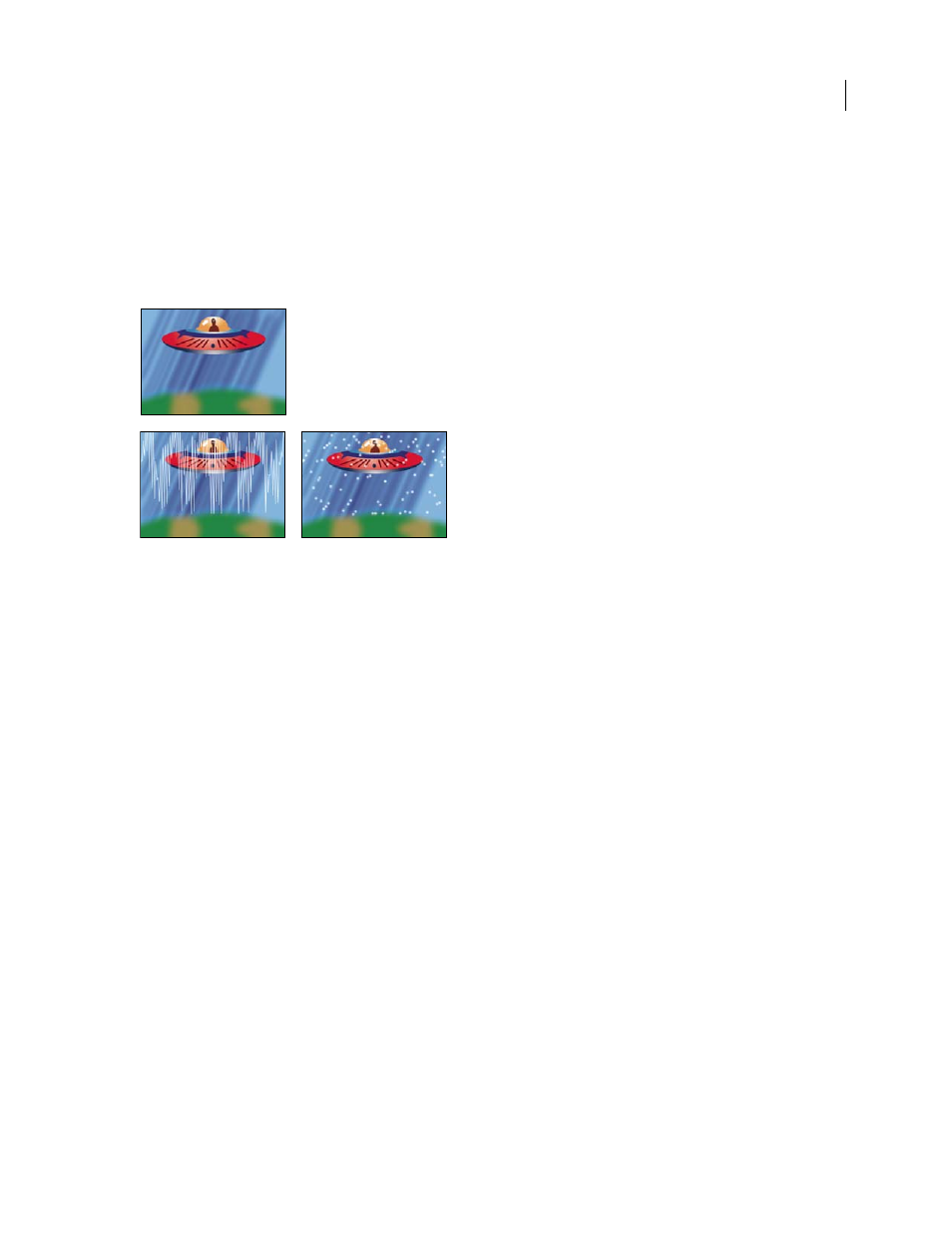Audio waveform effect, Beam effect – Adobe After Effects CS3 User Manual
Page 428

AFTER EFFECTS CS3
User Guide
423
Audio Waveform effect
Apply the Audio Waveform effect to a video layer to display the audio waveform amplitude of an audio layer. You
can display the audio waveform in a number of different ways, including along an open or closed mask path.
Note: Audio Waveform uses the audio source footage without time-remapping, effects, stretch, or levels. To display the
spectrum with such effects, precompose the audio layer before applying the Audio Waveform effect.
This effect works with 8-bpc, 16-bpc, and 32-bpc color.
Original (top left), and with effect applied (bottom left and right)
Audio Layer
The audio layer you want to display as a waveform.
Start Point, End Point
The position at which the waveform starts and ends, if Path is set to None.
Path
If set to None, the audio waveform is displayed along the path of the layer.
Displayed Samples
Number of samples to display in the waveform.
Maximum Height
Maximum height, in pixels, of a displayed frequency.
Audio Duration
Duration of audio, in milliseconds, used to calculate the waveform.
Audio Offset
Time offset, in milliseconds, used to retrieve the audio.
Thickness
The thickness of the waveform.
Softness
How feathered or blurry the waveform appears.
Inside Color, Outside Color
The inside and outside colors of the waveform.
Waveform Options
Mono combines the left and right channels of the audio layer. Nonstereo audio layers play as Mono.
Display Options
Digital displays each sample as a single vertical line connecting the minimum and maximum
source sample. This option simulates the display used on digital equipment. Analog Lines displays each sample as a
line connecting the previous and next sample from either the minimum or maximum audio source sample. This
option simulates the retrace seen in the display of an analog oscilloscope. Analog Dots displays each sample as a dot
representing either the minimum or maximum audio source sample.
Beam effect
The Beam effect simulates the movement of a beam, such as a laser beam. You can make the beam shoot, or you can
create a wandlike beam with stationary start and end points. The beam looks best when motion blur is enabled and
the shutter angle is set to 360.
